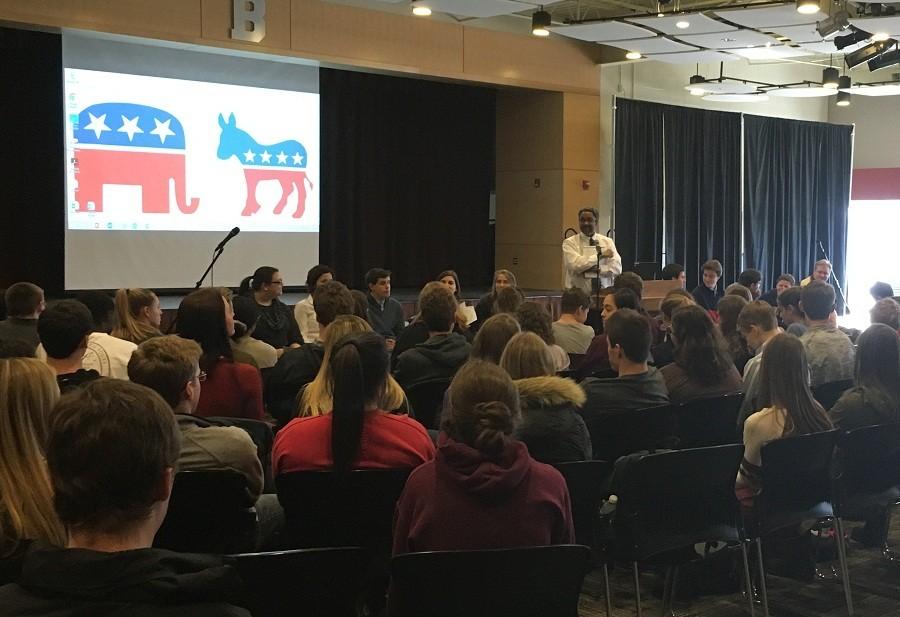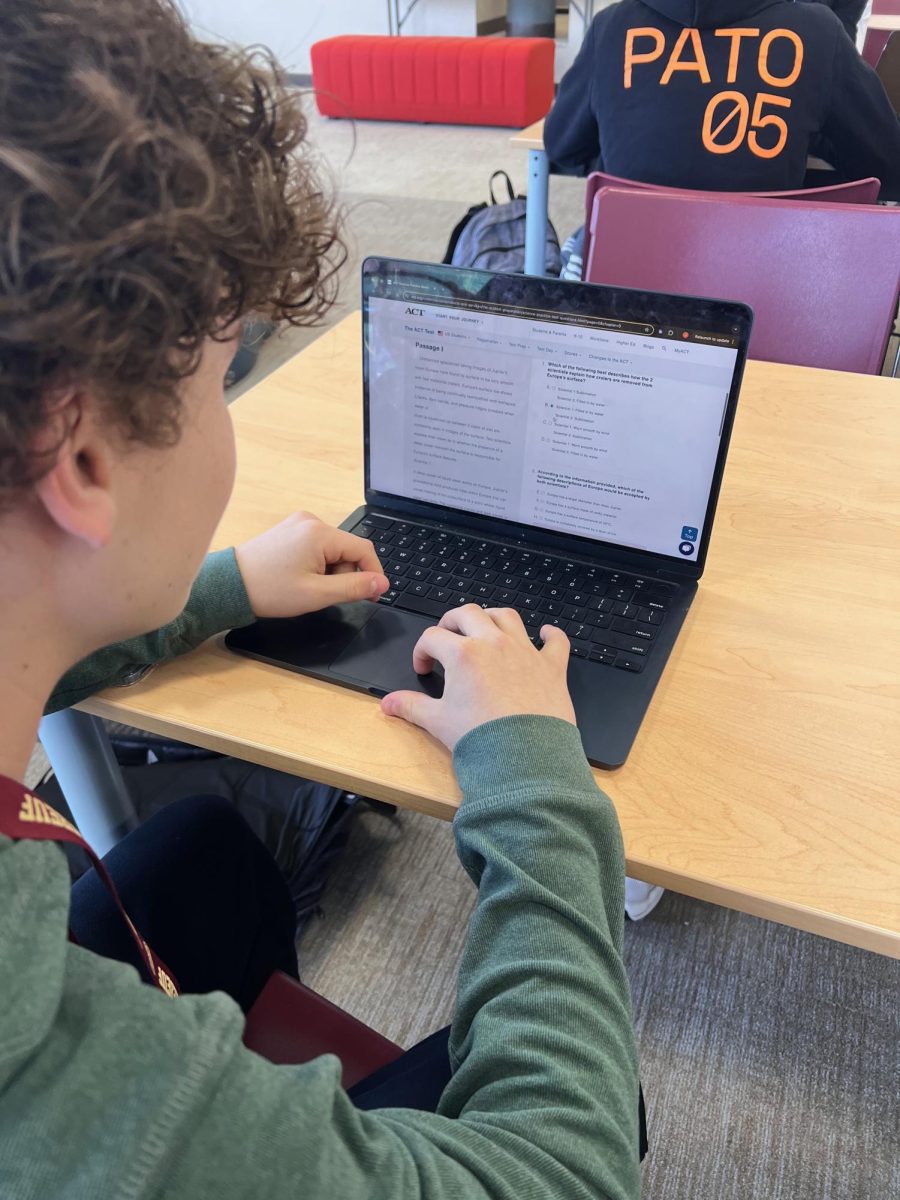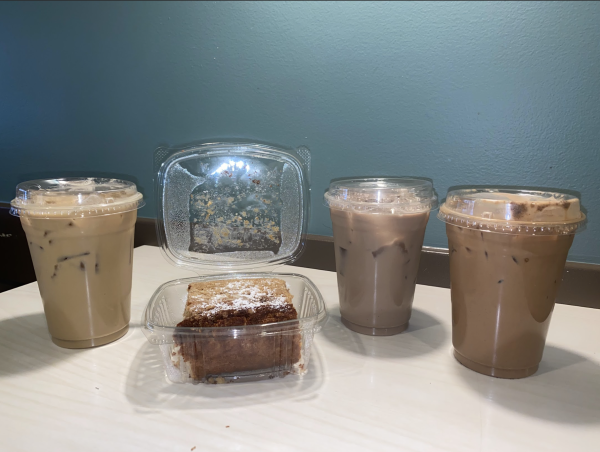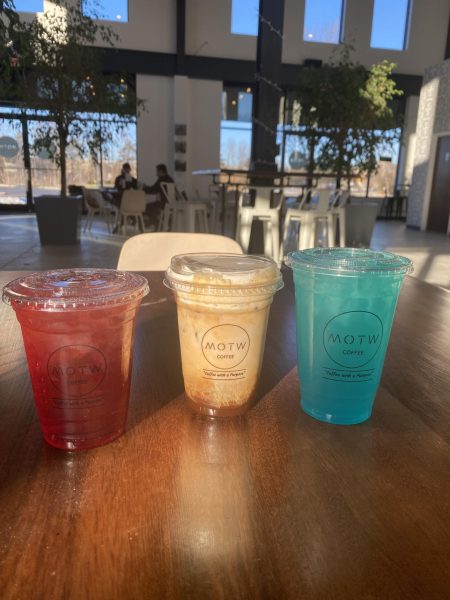Campus Dems and Republicans Square Off in Diversity Dialogue
March 23, 2016
On February 23, the Young Democrats and Young Republicans clubs came together to discuss their political ties and ask questions to the opposite party. The representatives for the Young Republicans club were Paul Tinkle, Mitchell Horn, and Hank Riegner, with Tom Sweeney as the moderator and Mr. Williams as the club’s teacher moderator. The Young Democrats representatives were Kevin Strenski, Olivia Totten, and Lizzy Case, with Hailey McLaughlin as the moderator and Ms. Moore as the club’s teacher moderator.
Mr. Brown, the organizer of the dialogue, opened up with, “Today’s dialogue is a test to see whether we as a school can discuss political issues, despite strong convictions.” Mr. Williams then proceeded to representatives’ statements about their party, adding, “There’s a lot of nervous energy in the room here.”
However, before the dialogue started, Mr. Williams posted the number for a texting poll, where students could text their views of both political parties. The Republican poll gave responses like, “Small government and fiscal stability,” “Trump,” “Conservative values,” and “Building walls.” The Democrat poll included statements such as, “Hillary Clinton,” “Inclusion,” “Pay for others,” and “FEEL THE BERN.”
After the poll, the two groups stated their reasons for why they were with their political party. The Young Democrats then started the dialogue by asking the Young Republicans their first question: do Republicans believe in climate change? Representatives responded with how much of the Republican Party is diverse in their beliefs and pointed out that while some Republicans don’t, many do believe in climate change and action against it; they added that belief in climate change is an opinion that both parties argue amongst themselves about.
Questions and answers like this went on in the dialogue. Questions for the Young Democrats included, “There is a virtual tie in the national poll between Hillary Clinton, a Democrat, and Bernie Sanders, a self-described socialist. What is the difference between a Democrat and a socialist?”, “Do you believe in Sanders’ call for free college, and if so, how will America pay for it?”, “How has the foreign policy of Barack Obama and Hillary Clinton made the world a safer place?”, and “Do you support women in combat roles, and, if so, should they be required to register at 18 for the draft?”. Young Democrats reiterated party beliefs and their personal thoughts on the questions, stating their faith in Sanders’ policies, acts under the Obama administration, and support of women in the military.
The questions for the Young Republicans were, “Is the Republican party against immigration?”, “How do Republicans support military spending but not free healthcare for all?”, and “Why is the 2nd Amendment still pertinent?”. Representatives responded with how Republicans want naturalization reform, see the need for protection and action against ISIS and other terrorist threats, and honor the nature of the 2nd Amendment but still call for better gun regulation, background identification, and gun education.
After these questions were asked, students were allowed to give questions to either or both clubs on political issues. The first question pertained to how the gun classes would be funded, and Young Republicans responded with the low cost of education classes and how free gun safety classes are already offered in Indiana. The second asked how heavy taxes on the wealthy could disincentivize the goal of becoming wealthy, to which Young Democrats explained how their party seeks to strengthen the middle class.
The third question described a recent incident in Indiana in which a six-year-old accidentally shot his father; the Republicans responded by noting that the father was irresponsible for leaving the gun out and not keeping it in a safe place and how free gun safety class would lessen the risk of accidental shootings. The fourth question concerned Obama’s claim of responsibility in Osama Bin Laden’s death, the controversy of the Iran deal, and how the Cuba deal would be helpful in making the world safer. The response went on about how the U.S. intended to better make peace with former enemy nations.
After the students’ questions, the dialogue ended with another texting poll of the audience regarding which political party each student aligned with. The results for the poll were 48% Democratic, 44% Republican, 4% Green, and 4% Other. This ended the dialogue, with everyone dispersing and representatives talking with each other. Both clubs hope to make diversity dialogues like this a yearly event.





